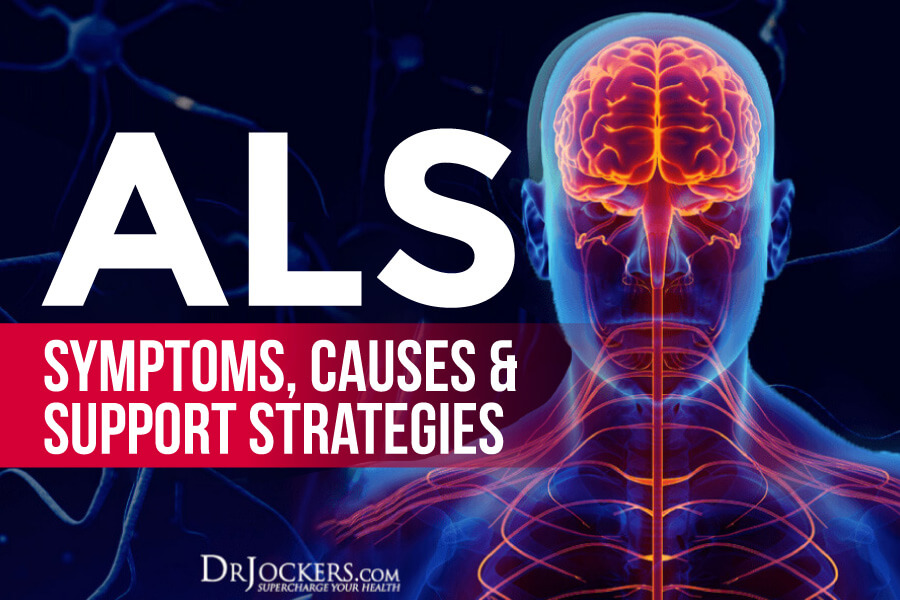 ALS: Symptoms, Causes, and Natural Healing Strategies
ALS: Symptoms, Causes, and Natural Healing Strategies
ALS, or amyotrophic lateral sclerosis, is a progressive neurodegenerative disease. It affects nerve cells in the brain and spinal cord. With ALS, a person’s brain loses connection with their muscles. This causes a person to lose their ability to walk, talk, eat, and eventually breathe.
This fatal and debilitating disease was named Lou Gehrig’s disease after the famous Yankees’ baseball player who died of ALS in the 1940s. Around 5,000 people in the U.S. are diagnosed with ALS each year. In 90% of these cases, no identifiable cause of the disease can be found.
Mitochondrial dysfunction is a hallmark of ALS. Research is also showing that dysregulated energy metabolism may cause the selective loss of motor neurons in ALS. Other factors that may play a role in ALS include imbalances in the gut microbiome, intestinal permeability, exposure to toxins, low nutrient levels, gene mutations, and more.
An anti-inflammatory diet following ketogenic guidelines may be very beneficial for people with ALS. This article will discuss this nutrition plan along with other natural strategies such as supporting the mitochondria, balancing the microbiome, and healing the gut. Testing for underlying issues such as gut dysbiosis, infections, and nutrient deficiencies is a great way to identify contributing factors.

What is ALS?
ALS, or amyotrophic lateral sclerosis, is a progressive neurodegenerative disease that affects nerve cells in the brain and the spinal cord. It was discovered by the French neurologist Jean-Martin Charcot in 1869.
A-myo-trophic comes from the Greek language. “A” means no, “Myo” refers to muscle, and “Trophic” means nourishment: “No muscle nourishment.” When a muscle has no nourishment, the muscle “atrophies” or wastes away. “Lateral” identifies the areas in a person’s spinal cord where portions of the nerve cells that signal and control the muscles are located. As this area degenerates, it leads to scarring or hardening (“sclerosis”) in the region (1).
Motor neurons reach from the brain to the spinal cord and from the spinal cord to the muscles throughout the body. ALS causes the progressive deterioration and eventual death of these neurons. When the motor neurons die, the ability of the brain to initiate and control muscle movement is lost.
The motor nerves that are affected when you have ALS are the motor neurons that provide voluntary movements and muscle control. With voluntary muscle action progressively affected, people may lose the ability to speak, eat, move and breathe.
The average survival time for people with ALS is three to five years. However, many people live ten or more years. Stephen Hawking, a famous theoretical physicist and former professor at University of Cambridge, was well-known for living with ALS for decades. Hawking was diagnosed with ALS in 1963 and passed away in 2018 at the age of 76.
ALS is also known as Lou Gehrig’s Disease after the famous baseball player Lou Gehrig was diagnosed with ALS. International attention to the disease was raised by the “Ice Bucket Challenge.”

Types and Causes of ALS
There are two different types of ALS, sporadic and familial. Familial ALS (FALS) means the disease is inherited. This type accounts for 5 to 10 percent of all cases in the U.S. With FALS, more than one person in the family has ALS. Sometimes family members have frontotemporal dementia as well.
A genetic analysis of FgluALS cases showed that mutations in superoxide dismutase 1 (SOD1), in TAR DNA binding protein (TARDBP) encoding TDP-43, and in fused in sarcoma (FUS), as well as hexanucletoide repeat expansions in chromosome 9 open reading frame 72 (C9ORF72) are the most common genetic causes of ALS (2).
There is a 50% chance a child born to someone with FALS will inherit the gene mutation and may develop the disease. However, inheriting this gene mutation does not guarantee a person will develop symptoms of ALS. If they do develop symptoms, people with FALS often show symptoms at an earlier age than with sporadic ALS.
Sporadic ALS is the most common form of ALS and may affect anyone, anywhere. This type of ALS accounts for 90 to 95% of all cases in the US. The exact cause of sporadic ALS is not known but may be due to a combination of environmental and genetic risk factors.
Possible environmental risk factors and causes include:
- Heavy metal toxicity
- Head and neck trauma
- Low levels of magnesium and calcium
- Glutamate toxicity
- Antioxidant deficiency including SOD and glutathione
- Trouble digesting protein properly
- Low levels of vitamin E and vitamin B12
- Exposure to toxins including pesticides
- Immune system dysfunction
- Smoking
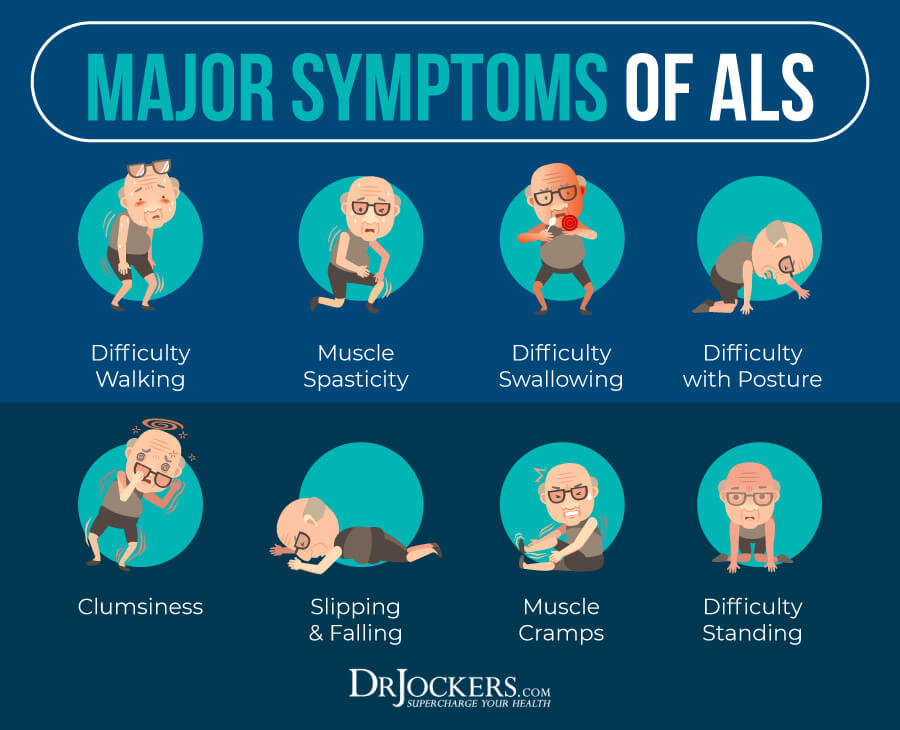
Mitochondrial and Metabolic Dysfunction with ALS
Growing evidence shows that there are metabolic defects in people with ALS (2). Mitochondrial, carbohydrate, and lipid metabolism are dysregulated in ALS, although the mechanisms underlying this dysregulation remain mostly unknown.
To meet its substantial energy demand, the central nervous system (CNS) relies on glucose for energy. Defects in glucose metabolism and mitochondrial dysfunction limit the availability of adenosine triphosphate (ATP) to central nervous system tissues and muscle. ATP is the energy-carrying molecule found in cells.
In people with ALS, there is an imbalance between energy uptake and expenditure. Energy uptake is often lowered, and energy expenditure is increased. This leads to weight loss and correlates with the progression of the disease.
The activity of AMP-activated protein kinase (AMPK) has also been shown to be elevated in the motor neurons of ALS patients. AMP-K (Adenosine Monophosphate-activated Protein Kinase) is a cellular enzyme that regulates the ways our bodies use and transform energy. AMP-K serves as our body’s master regulating switch and is involved in regulating glucose uptake, creating new mitochondria, and more.
AMPK is an important player in cellular energy homeostasis. Active AMPK results in an increase in catabolic (breakdown of tissue) and a decrease in anabolic (building tissue) pathways (2).

Mast Cell Activation and ALS
Mast cells have been linked to numerous neuroinflammatory conditions, including ALS. These unique cells are found in most tissues of the body, including the central nervous system. They have multiple capabilities and are involved in both the innate and adaptive immune systems. In addition to being the body’s first line of defense against pathogens, mast cells are critical for the pathogenesis of inflammatory diseases.
Mast cells produce many inflammatory mediators when activated. In the central nervous system, mast cells contribute to the normal behavioral development and functioning (3). However, when neuroinflammation is prolonged, it increases oxidative stress and the death of nearby neurons. This is a common mechanism for neurodegenerative disease (4).
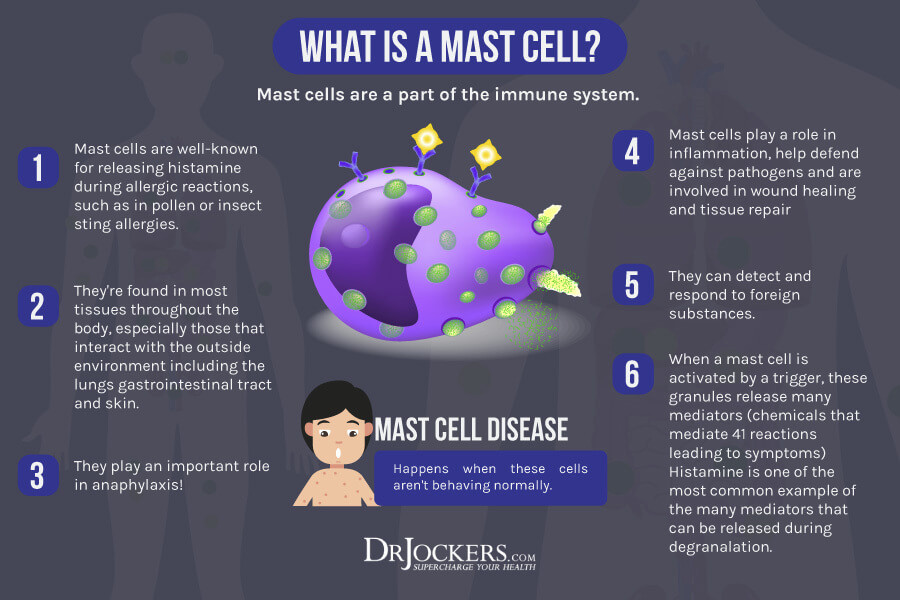
Symptoms of ALS
There is a lot of variation in people for both the initial symptoms of ALS and the rate at which the disease progresses. (5) Not all people with ALS experience the same symptoms or the same sequences or patterns of progression. However for most people with ALS, there is a gradual onset of symptoms.
Progressive muscle weakness is the most common initial symptom in ALS. This can begin in the muscles that control speech causing slurred speech or with muscle twitching and weakness in a limb.
Other signs and symptoms of ALS include:
- Tripping and falling
- Difficulty walking
- Difficulty with normal daily activities
- Hand weakness or clumsiness (dropping things)
- Weakness in the legs, feet, or ankles
- Abnormal fatigue of the arms and/or legs
- Slurred speech
- Trouble swallowing
- Muscle cramps and twitches
- Uncontrollable periods of laughing, crying or yawning
- Cognitive and behavioral changes
Shortness of breath is a common symptom of ALS due to the effect on the breathing muscles. Ultimately, people with ALS will need permanent ventilatory support to assist with breathing. A common reason that ALS leads to death is due to respiratory failure.
Since ALS attacks only motor neurons, the sense of sight, touch, hearing, taste and smell are not affected. For many people, muscles of the eyes and bladder are generally not affected.
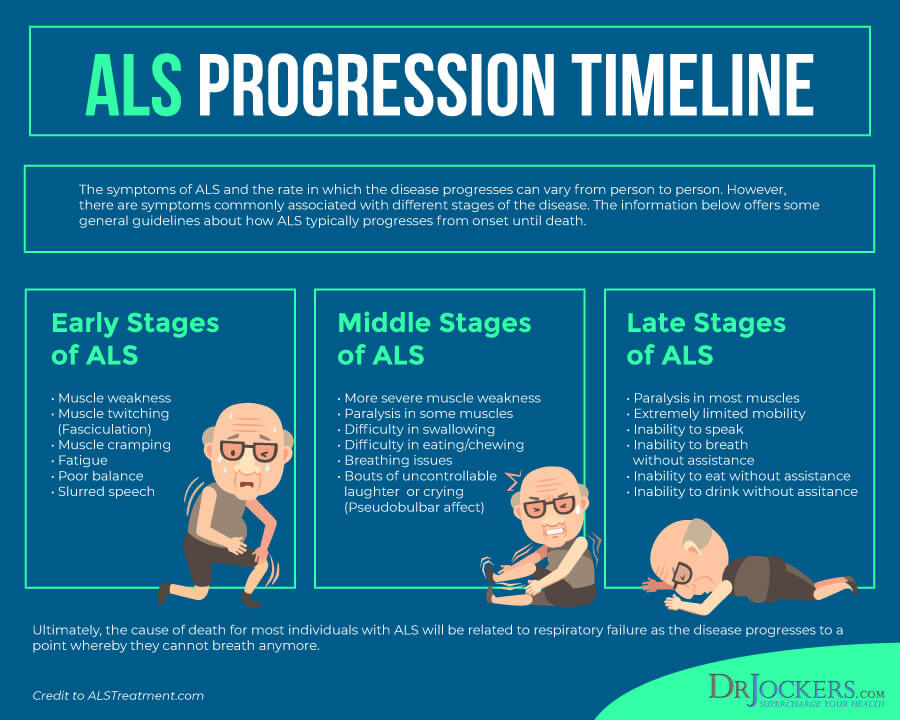
How is ALS Diagnosed?
ALS is difficult to diagnose. There are other diseases that mimic ALS that must be ruled out. A diagnosis is made through clinical examination and series of diagnostic tests. A comprehensive diagnostic workup includes most, if not all, of the following procedures:
- Electrodiagnostic tests including electromyography (EMG) and nerve conduction velocity (NCV)
- Blood and urine studies including high resolution serum protein electrophoresis, thyroid and parathyroid hormone levels and 24-hour urine collection for heavy metals
- Spinal tap
- X-rays, including magnetic resonance imaging (MRI)
- Myelogram of cervical spine
- Muscle and/or nerve biopsy
- A thorough neurological examination
These tests are done at the discretion of the physician, usually based on the results of other diagnostic tests and the physical examination. For a list of recognized experts in the field: The ALS Association Certified Centers and ALS Clinics.
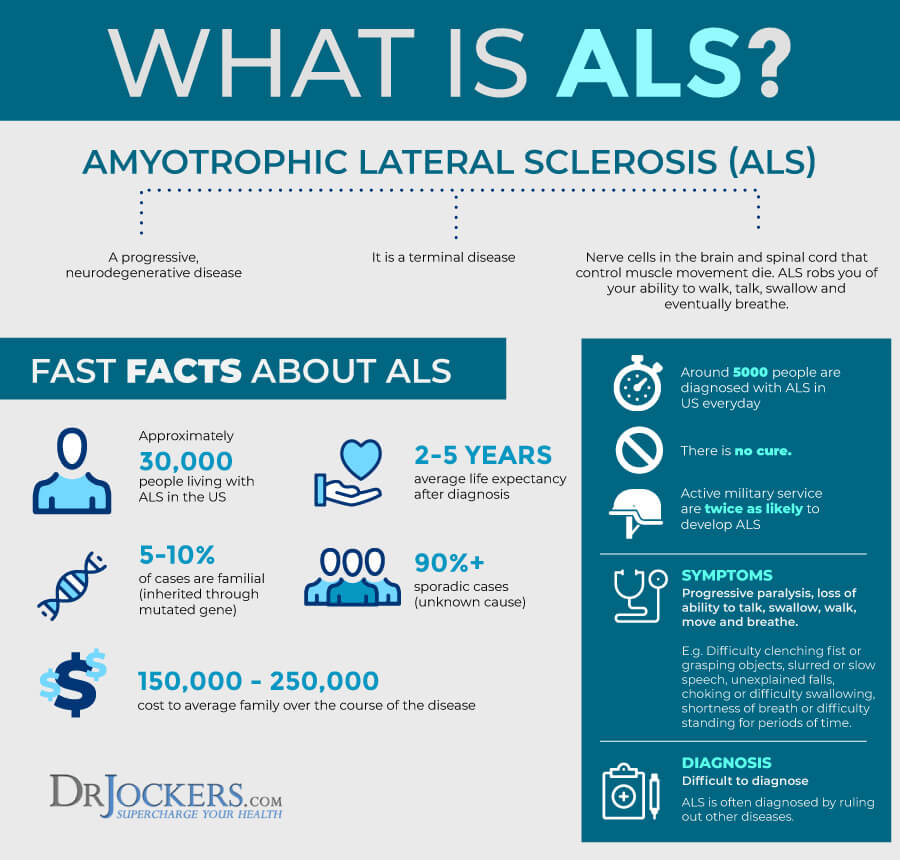
Conventional Treatment for ALS
Currently, there is no cure for ALS, and no efficient treatment for ALS is available. However, scientists all over the world are conducting studies to learn more about the disease and develop more treatments and hopefully a cure for ALS.
Four drugs are approved by the U.S. FDA to treat ALS: Riluzole, Nuedexta, Radicava, and Tiglutik. Other therapies used with ALS patients include physical therapy, speech therapy, nutritional support, and breathing support.

Natural Support Strategies For ALS
There are many support strategies that may be helpful for individuals with ALS. These strategies have not been shown to prevent, mitigate, treat or put ALS into remission, however, they can be extremely helpful for improving the individual’s health and quality of life. Be sure to consult with your healthcare provider about these strategies.
1. Anti-Inflammatory, Ketogenic Nutrition Plan
It is important for individuals with ALS to consume a nutrient dense, anti-inflammatory, diet. Following ketogenic guidelines may also be helpful for ALS. Increased dietary fat and cholesterol intake may reduce the risk of ALS and the rate of disease progression (6).
An anti-inflammatory diet removes foods that cause inflammation and includes nutrient-dense, organic, non-GMO vegetables, fruits, herbs, healthy fats, and clean protein. This diet helps to reduce inflammation, improve nutrient levels, and reduce the toxic load.
The ketogenic diet is a nutrition plan that helps the body produce ketones and utilize these ketones as an energy source. Macronutrient ratios for the ketogenic nutrition plan are:
- 65-70% Healthy fats
- 15-30% Clean Protein
- 5-10% Carbohydrates
A ketogenic diet is important for strengthening healthy cells. With a ketogenic diet, your healthy cells use ketones from fat for energy, rather than glucose from carbohydrates.
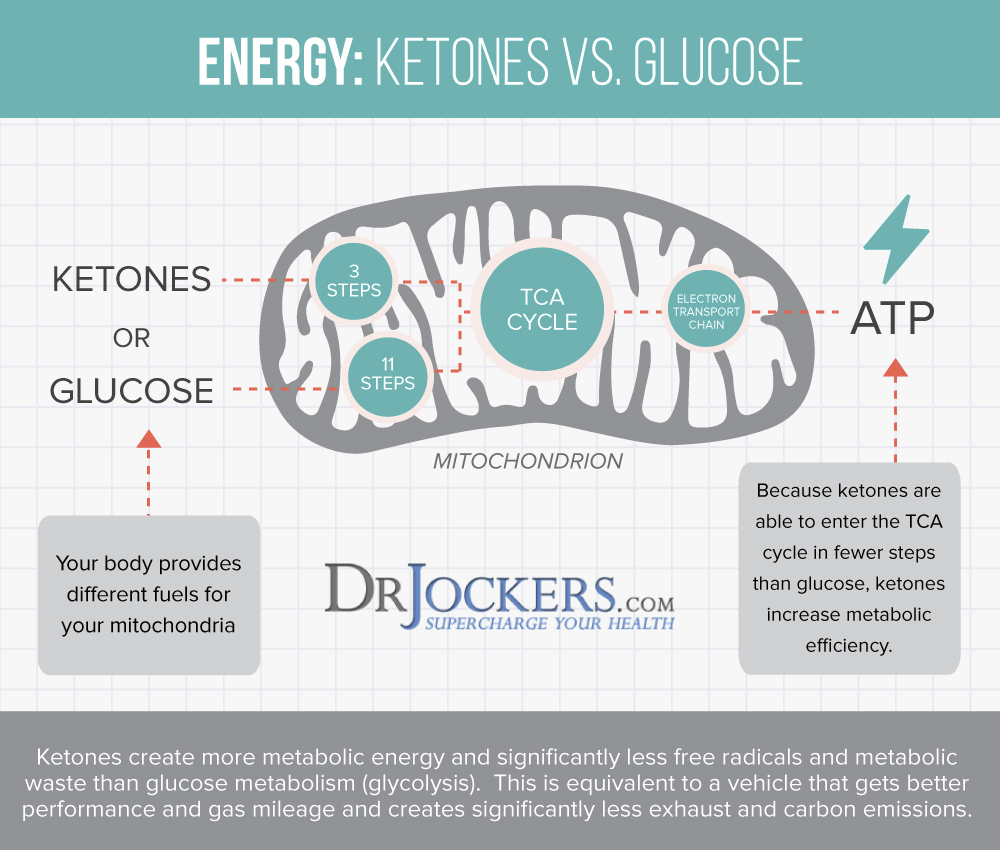
Food to Avoid
Inflammation and toxins are associated with ALS. It is very important to avoid inflammatory foods and any with pesticides or other toxic debris. These include meat and dairy from conventionally raised animals, farmed fish, processed foods, hydrogenated fats and highly processed vegetable oils, refined sugars and grains, and GMO foods.
Food additives and preservatives and artificial sweeteners should be strictly avoided. Dietary intake of monosodium glutamate (MSG) has been linked to ALS. Aspartate which is found in artificial sweeteners is a potent neurotoxin.

Foods to Include
The foods to eat on an anti-inflammatory, ketogenic diet are whole, unprocessed clean-sourced foods. These include grass-fed meats, wild-caught fish, and pastured chicken and eggs. A variety of vegetables are included such as cruciferous vegetables, leeks, shallots, cucumbers, asparagus, and leafy greens are included. Nutrient-dense, low-glycemic fruits include berries, lemons and limes, grapefruit, and granny smith apples.
Vegetables, fruits, and herbs have abundant amounts of antioxidants and phytonutrients. Antioxidants protect cells from free radical damage and oxidative stress which are associated with ALS. They also have powerful anti-inflammatory properties.
Quality fats are a very important part of an anti-inflammatory, ketogenic diet. Healthy fats are found in coconut, olives, avocados, and their oils and in grass-fed butter and ghee. Omega-3 fatty acids and conjugated linoleic acid (CLA) found in wild-caught salmon and grass-fed beef and dairy are important for neuronal health. These healthy fats are an efficient source of fuel to combat inflammation and maintain nerve function.

2. Support Mitochondria
Mitochondrial dysfunction is known to be a hallmark of ALS (2). Mitochondria are especially critical to the motor neurons that die in ALS, as these cells must meet extraordinary demands for cellular energy. They are also involved in the process called apoptosis, a deliberate removal of cells.
Researchers have found damage to the mitochondria in the cells of mice with mutated SOD1. This mutated protein associated with some cases of inherited ALS may indeed form abnormal deposits within these crucial cell organelles. In ALS, evidence is building that actions on or originating in the mitochondria may be an important part of the disease. Changes in the mitochondria can be detected before physical symptoms of ALS.
A role for mitochondria in ALS may explain why SOD1 mutant proteins selectively damage the motor neurons. Some recent studies suggest that mutant SOD1 protein builds up in the mitochondria of people with ALS. In healthy cells, the normal SOD1 protein is present throughout the cell but may not be in the mitochondria.
This possible shift of mutant SOD1 into the mitochondria of people with ALS may be occurring in motor neurons and not in the liver and kidneys. Evidence also suggests that mutant SOD1 attaches to key proteins involved in the cell death process further implicating mitochondria and apoptosis in ALS.
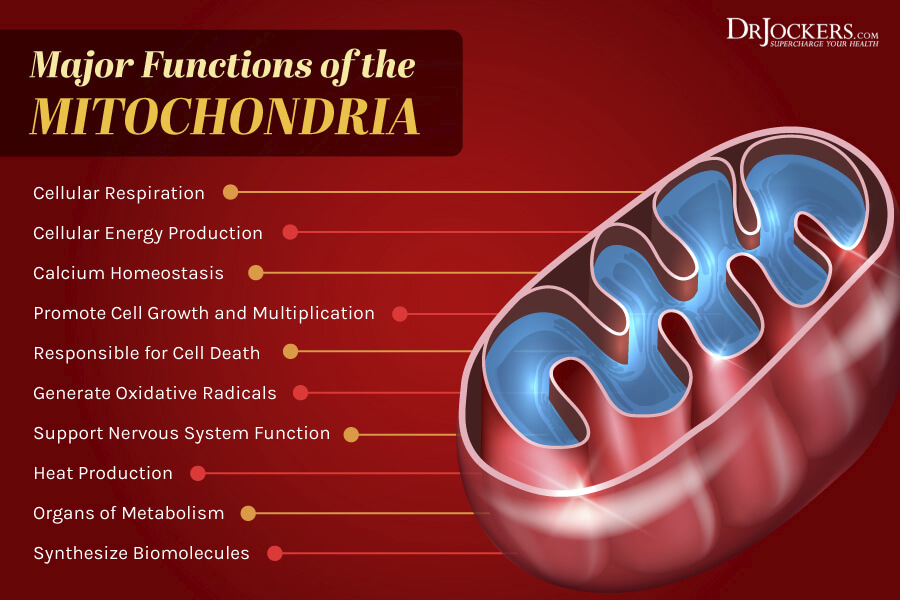
Nutrients That Support Mitochondrial Function
There is physical damage to the mitochondria in mice with some of the known SOD1 mutations. The organelles swell, then they develop empty spaces. Normal mitochondria consist of tightly folded membranes. With ALS, empty spaces appear in the mitochondria and the inner membranes break apart. The empty spaces appear in mitochondria early in the disease process in the mice. There is a slowing of mitochondrial reactions that provide energy to the cell.
While this science is emerging, supporting mitochondria is critical for anyone with ALS. Some key nutrients to look for to support mitochondrial health include alpha lipoic acid, CoQ10, N-Acetyl cysteine, B vitamins, magnesium, Acetyl L-carnitine, creatine monohydrate and D-ribose. Be sure to discuss dosages with your health care practitioner.
Producing ketones can be a stressor on the body, especially if you have mitochondrial dysfunction. MCT oil is easily converted into ketones to alleviate this stress and improve your state of ketosis. The best kind of MCT oil is a pure C8 (caprylic acid) form as this turns into ketones the quickest.
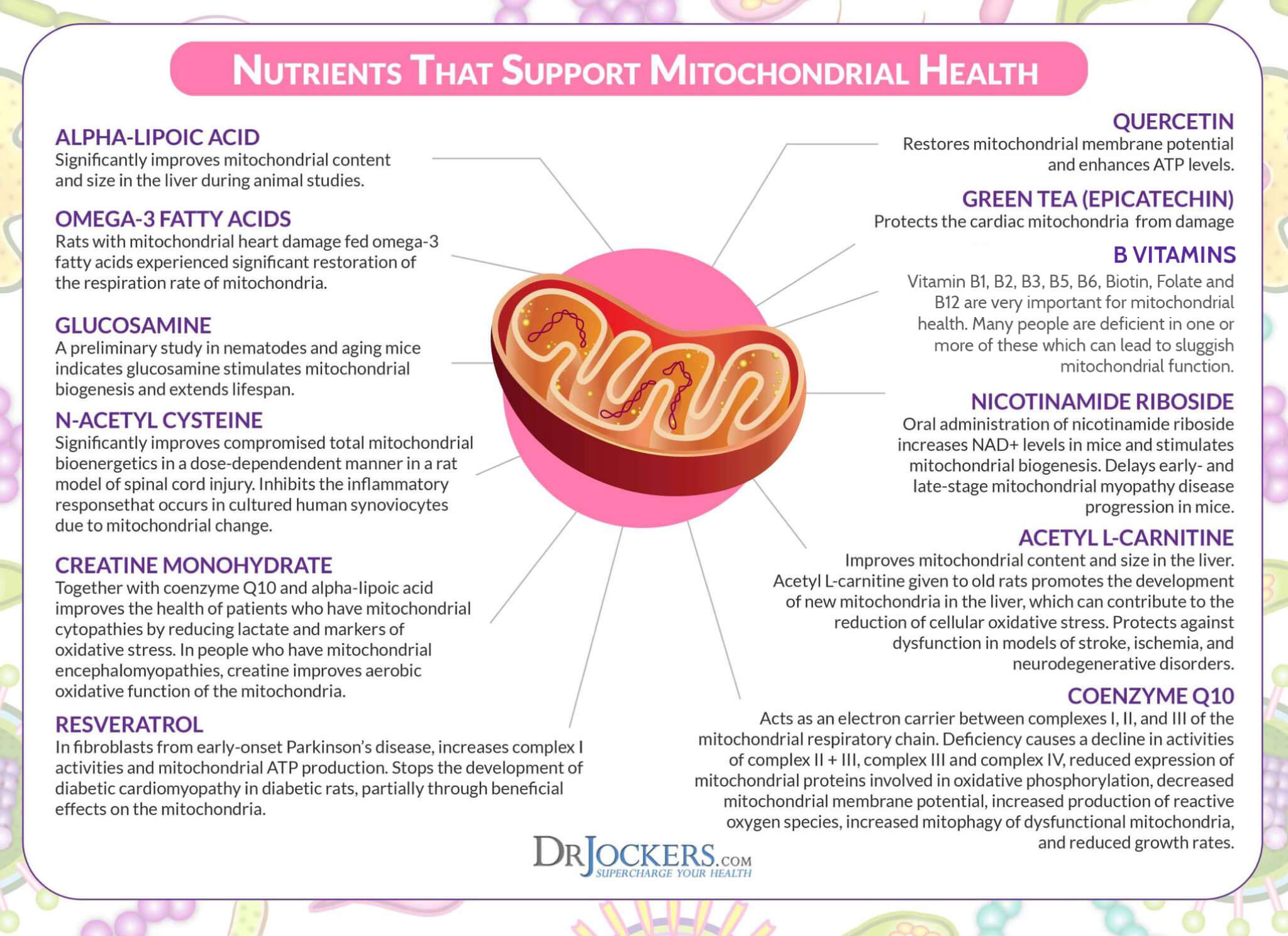
3. Minimize Toxic Exposure and Detox the Body
Detoxification is important because there is growing evidence that environmental toxins play a major role in ALS and other neurological disorders. Toxins are all around us. They are found in personal care products, cleaning supplies, air, water, and more. Since it is impossible to eliminate all exposure to toxins, practicing daily detoxification strategies is important.
There are many organs of detoxification, including the liver and gallbladder, skin, lymphatic system, lungs, and kidneys. It is important to support all of these detoxification organs to eliminate toxins and improve your health. Some excellent herbs for supporting liver-gallbladder health include milk thistle, dandelion and parsley.
Juicing, coffee enemas, sauna, lymphatic cleansing, physical exercise, breathing exercises, heavy metal detoxification, and regular bowel movements are different strategies and pathways to eliminate toxins. It is also important to improve your dental health by removing amalgams and infected root canals and treating cavitations and periodontal disease.
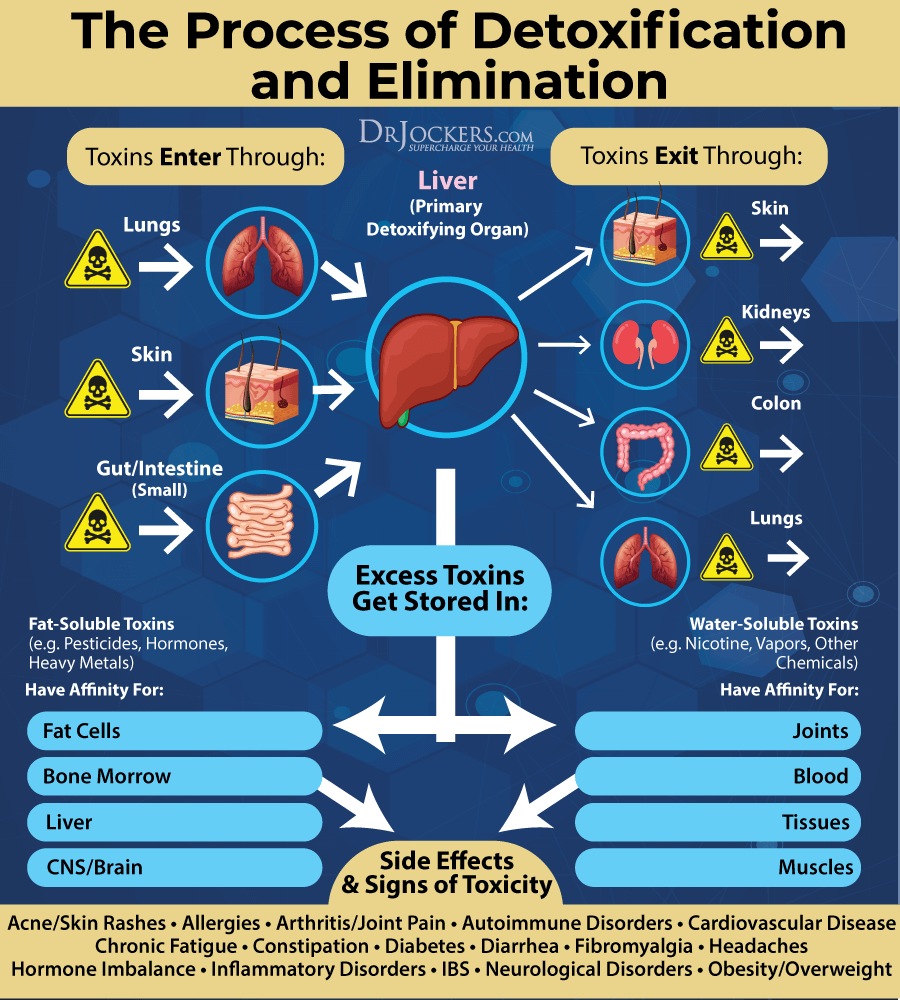
4. Balance Gut Microbiome
Proper diversity and balance of your gut microbiome is essential to overall health and may play a role in ALS. Your gut microbiome is the large and complex community of microorganisms in the gastrointestinal tract. The gut and brain are connected through the gut/brain axis.
Several studies show the involvement of a dysbiotic microbiome and increased gut permeability in ALS (2). Recent research shows that the gut microbiome may affect the course of ALS (7). Low diversity of the microbiome is linked to ALS.
Metabolic changes in ALS may result from changes in the microbiome. In one study, symptoms of ALS worsened after mice were given antibiotics to wipe out their microbiome. Progression of ALS-like disease was slowed after the mice received certain strains of gut microbes, especially Akkermansia muciniphila (8).

One way to help rebalance your gut microbiome is by supplementing with probiotics. Probiotics are beneficial microorganisms (bacteria and yeasts) that keep your gut and body healthy. Supplementing with a high-quality probiotic may be very beneficial.
It is also important to address any gut infections. Gut infections result from a variety of pathogens and can wreak havoc on your health and microbiome. This includes things like H Pylori, parasites, yeast and fungal overgrowth and bacterial overgrowths.
To test your overall gut health, and possible gut infections, the GI-MAP™ Stool Analysis Test is the most thorough stool test on the market. It is the only FDA-approved DNA test for gastrointestinal microbes and pathogens available. This comprehensive test reveals the integrity of your gastrointestinal system with digestion, immune response, and gliadin, and inflammation markers.
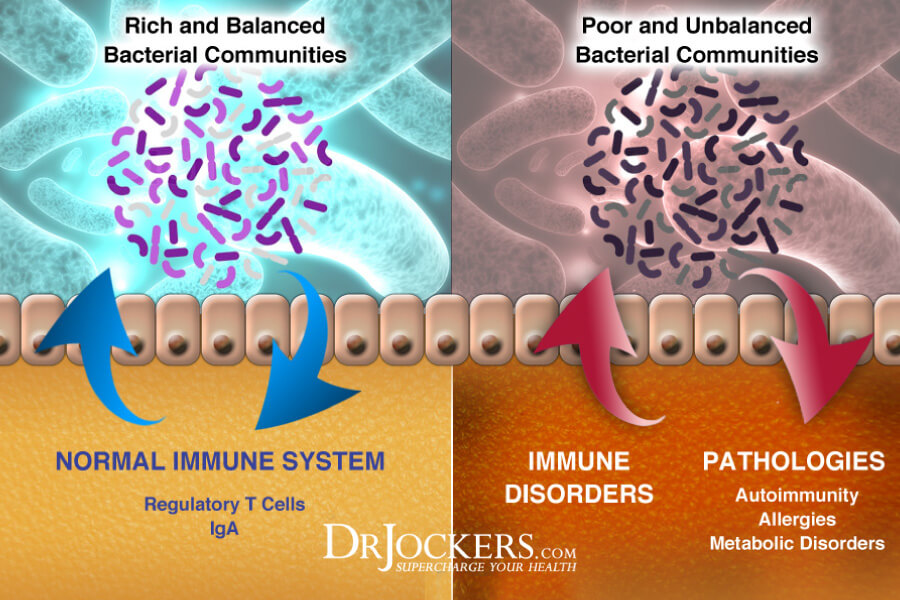
5. Heal Leaky Gut
In addition to dysbiosis, ALS patients may have damaged tight junction structure and increased permeability in the intestines (leaky gut) (2). When the gut lining is inflamed and damaged, the gut lining is more porous than it should be. This allows undigested food molecules, bacteria, and fungi (and their toxins) to enter the bloodstream.
There are nutrients such as aloe vera, L-glutamine, marshmallow root, slippery elm, arabinogalactan, and licorice root that may help to heal the gut lining. Consuming liquid nutrition is also great for healing the gut and increasing nutrient absorption. Liquid nutrition does not require as much energy to digest, so your body can focus on healing and repair. A high-quality collagen or bone broth protein powder may be very helpful.
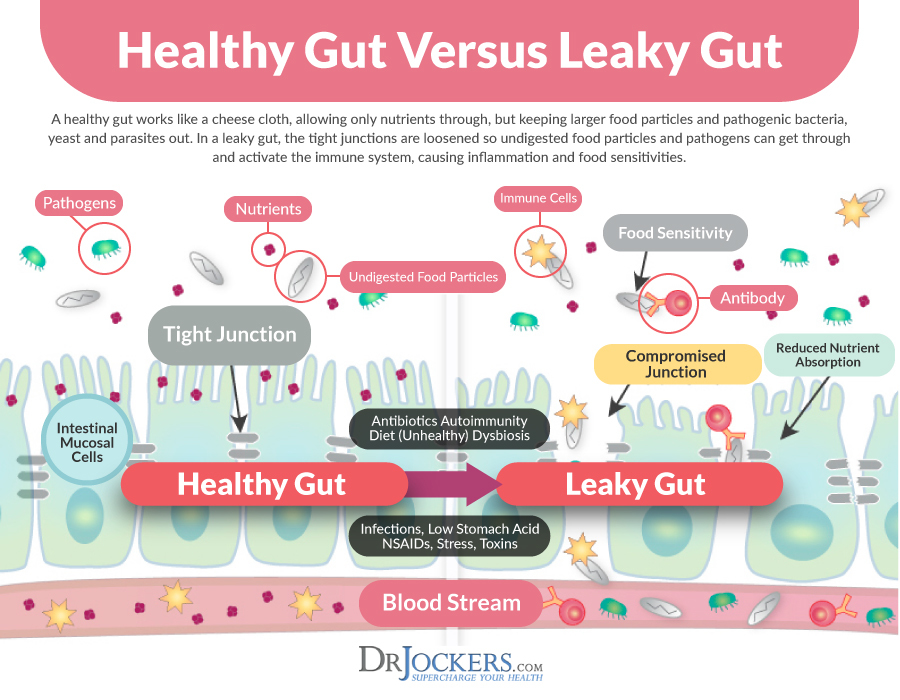
6. Reduce EMF Exposure
Evidence shows an association between ALS and electromagnetic field (EMF) exposure. (10) An EMF is a physical field produced by an electrically charged object. These include cell phones, microwave ovens, WiFi, smart meters, and more.
Exposure to EMFs may affect your CNS and overall health in various ways that may be harmful. For more information on the dangers of EMFs along with ways to protect yourself from exposure, see this article.
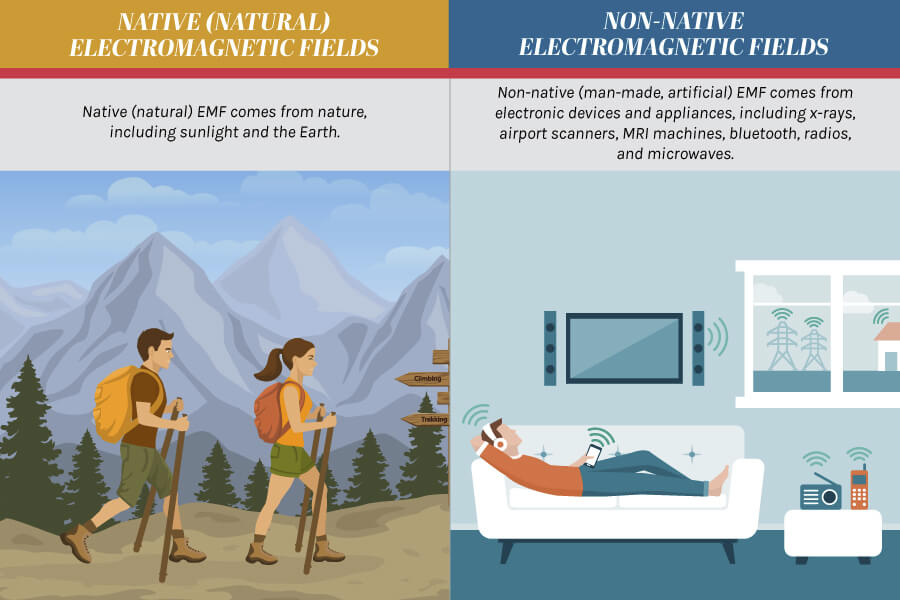
7. Optimize Micronutrient Levels
Vitamins, minerals, antioxidants, and amino acids are all micronutrients. They play a central role in metabolism and the maintenance of tissue function. People with ALS may have deficiencies in vitamins and minerals, particularly vitamin B12, vitamin E, calcium, and magnesium.
Using methylated vitamin B-12 may help people with ALS. The major role of vitamin B12 in the body is to promote dozens of methylation reactions. These reactions are essential for normal physiology and include the chemical detoxification of the neurotoxin homocysteine. In people with ALS, blood homocysteine levels correlate with level of ALS disability.
Vitamin B12 works with folate, vitamin B6 and vitamin B2 and the resulting metabolites to change homocysteine into the non-toxic amino acid methionine. Providing proper methylation support can help to reduce homocysteine to a safe level and improve neuronal health. Using a multivitamin/multimineral formula may be beneficial.
Individuals with ALS may benefit from testing their micronutrient levels. The best way to test micronutrient levels is with the Spectracell Micronutrient Test. This test measures functional deficiencies of micronutrients at the cellular level and gives the most comprehensive nutritional analysis available. This allows you to use targeted supplementation to address any deficiencies.

8. Improve Glutathione Levels
ALS is associated with free radical damage and oxidative stress. Glutathione, commonly referred to as “the master antioxidant,” may help to combat these issues. It helps to improve the inflammatory response and has the essential role of maintaining exogenous antioxidants such as vitamins C and E in their active form. Glutathione protects cells from free radicals and repairs free radical damage that does occur.
Many people are deficient in glutathione and may benefit from supplementation. For supplemental forms, look for reduced glutathione, acetylated glutathione and liposomal forms of glutathione. Additionally, precursors like N-Acetyl Cysteine (NAC) help the body to produce glutathione. Discuss dosages with your health care practitioner.
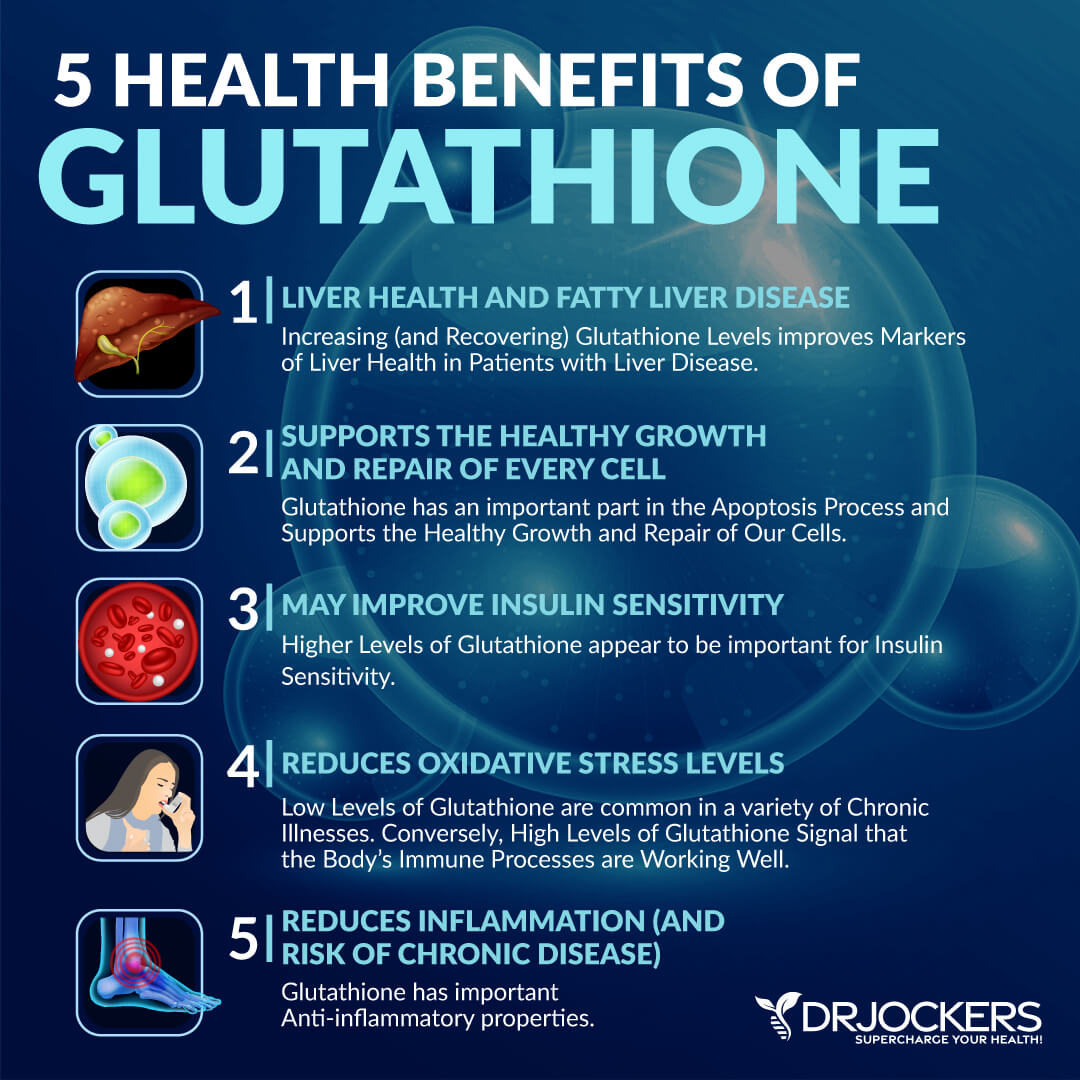
9. Consume Omega 3 Fatty Acids
Long-chain polyunsaturated fatty acids (PUFAs) are incorporated in brain lipids and modulate oxidative and inflammatory processes. Consumption of foods high in omega-3 fatty acids may help prevent or delay the onset of ALS (9).
Omega-3 fatty acids are essential fats that your body cannot produce. You must get Omega-3s from dietary and supplement sources. There are three main kinds of omega-3s, DHA, EPA, and ALA. Wild-caught, fatty fish like salmon and sardines contain the omega-3 fatty acids EPA and DHA.
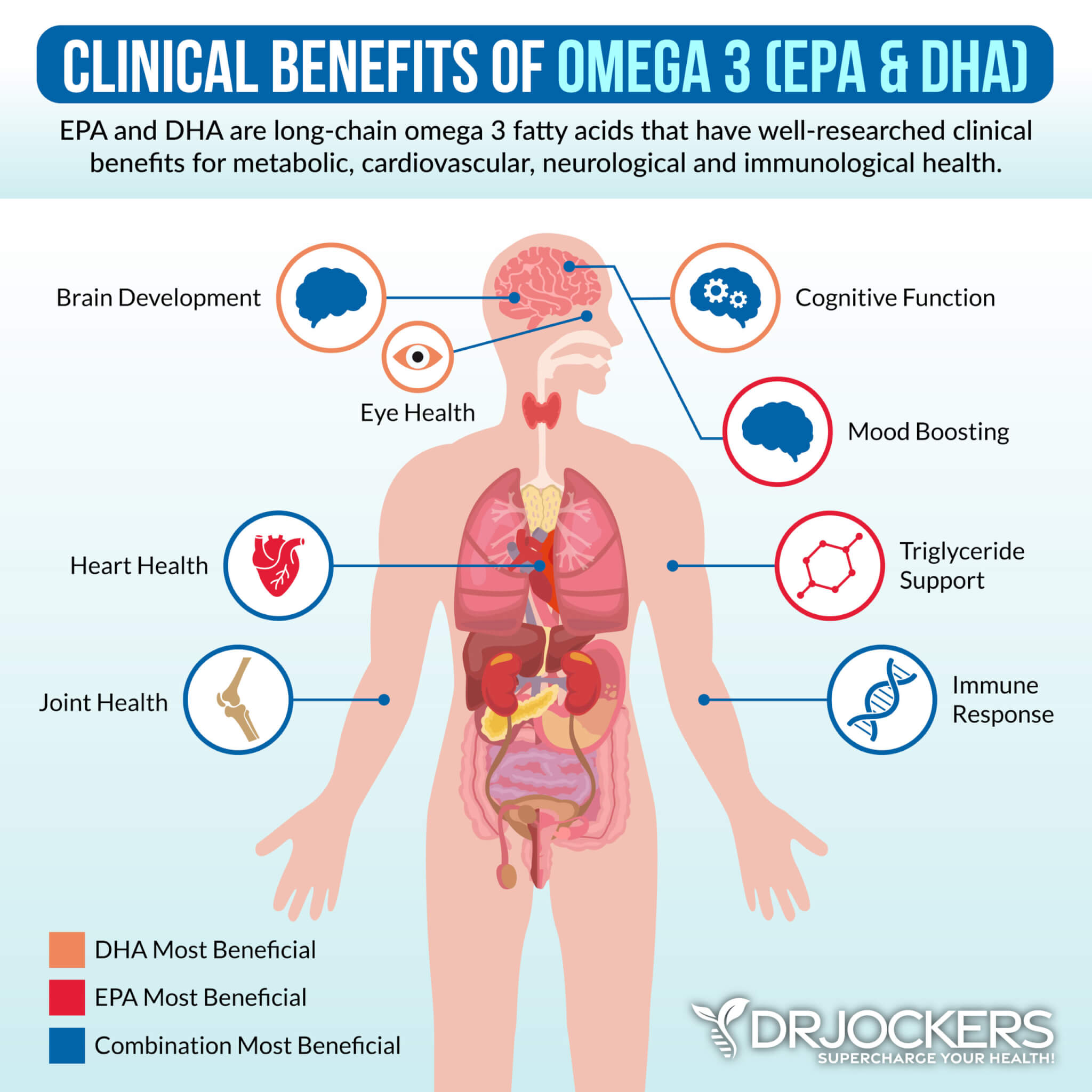
10. Practice Breathing Exercises
Shortness of breath and respiratory issues are common for people with ALS. People with ALS experience respiratory issues because their diaphragm is weakened and stops stimulating the lungs to breathe. Breathing exercises to strengthen the diaphragm may be very helpful.
An easy and straightforward breathing technique is the 4-7-8 exercise. This exercise was created by Dr. Andrew Weil by integrating different practices of pranayama, an old yogic art that helps the body heal by replenishing its oxygen content. To perform this breathing routine:
- Start by parting your lips gradually.
- Next, exhale fully, ensuring that you can release all the air in your lungs. Exhale with force and imagine that you are releasing all the tension in your body.
- After that, press your lips together. While doing so, inhale silently by your nose. Inhale for a good four seconds.
- Don’t exhale yet. Try to hold the breath that you have gathered for a count of seven seconds.
- Now, you can release the air by exhaling for a count of eight seconds. If you can hear a “whooshing” effect when you are exhaling, you are doing the task correctly.
- For beginners, this exercise can be repeated four times. Once you can get used to it, you can escalate the repetition to eight times.
Breathing is also important because it oxygenates tissues which is essential for all human performance, energy, and function. It also activates the parasympathetic nervous system, the part of the nervous system that controls rest and digestion.

11. Emotional Support
ALS can be emotionally devastating for the patient as well as their family, friends, and caregivers. Many people dealing with ALS experience increased stress, depression, and lack of sleep.
Stress and anxiety affect gut-brain interactions that may play a role in ALS. These include:
- modulating key inflammatory pathways
- decreasing mucosal blood flow
- causing bowel dysfunction in different ways
- activating the “fight or flight” response in the central nervous system which can slow down or even stop the digestive process
- altering the gut flora, and
- increasing intestinal permeability.
It is important to take steps to manage stress and cope with difficult emotions. Helpful strategies include prayer or meditation, mindfulness, grounding, deep breathing exercises, sunlight exposure, Epsom salt baths, prioritizing restorative sleep, and dry brushing.
In addition to relieving stress, sleep reduces inflammation and restores the brain by flushing out toxins. Improving the brain’s waste clearing processes lowers the risk for neurological diseases.
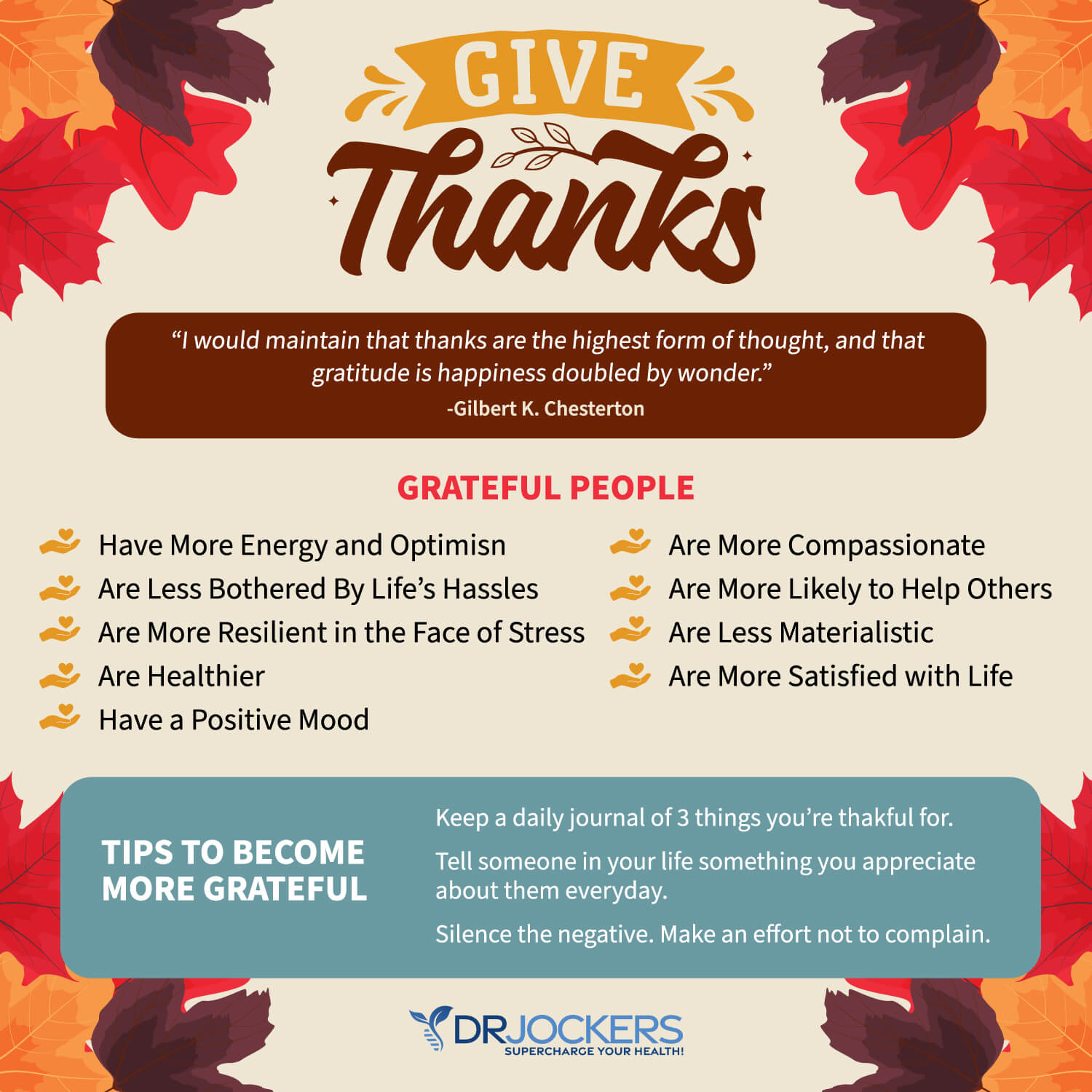
12. Consider Hyperbaric Oxygen Therapy
I recommend hyperbaric oxygen therapy for neurodegenerative conditions such as ALS. Hyperbaric oxygen support may help to raise tissue oxygen levels, increase your body’s defense system, encourage new blood vessel growth, reduce swelling, increase stem cells, and support optimal health.
To learn more about hyperbaric oxygen therapy, I recommend reading this article (11, 12, 13, 14, 15).
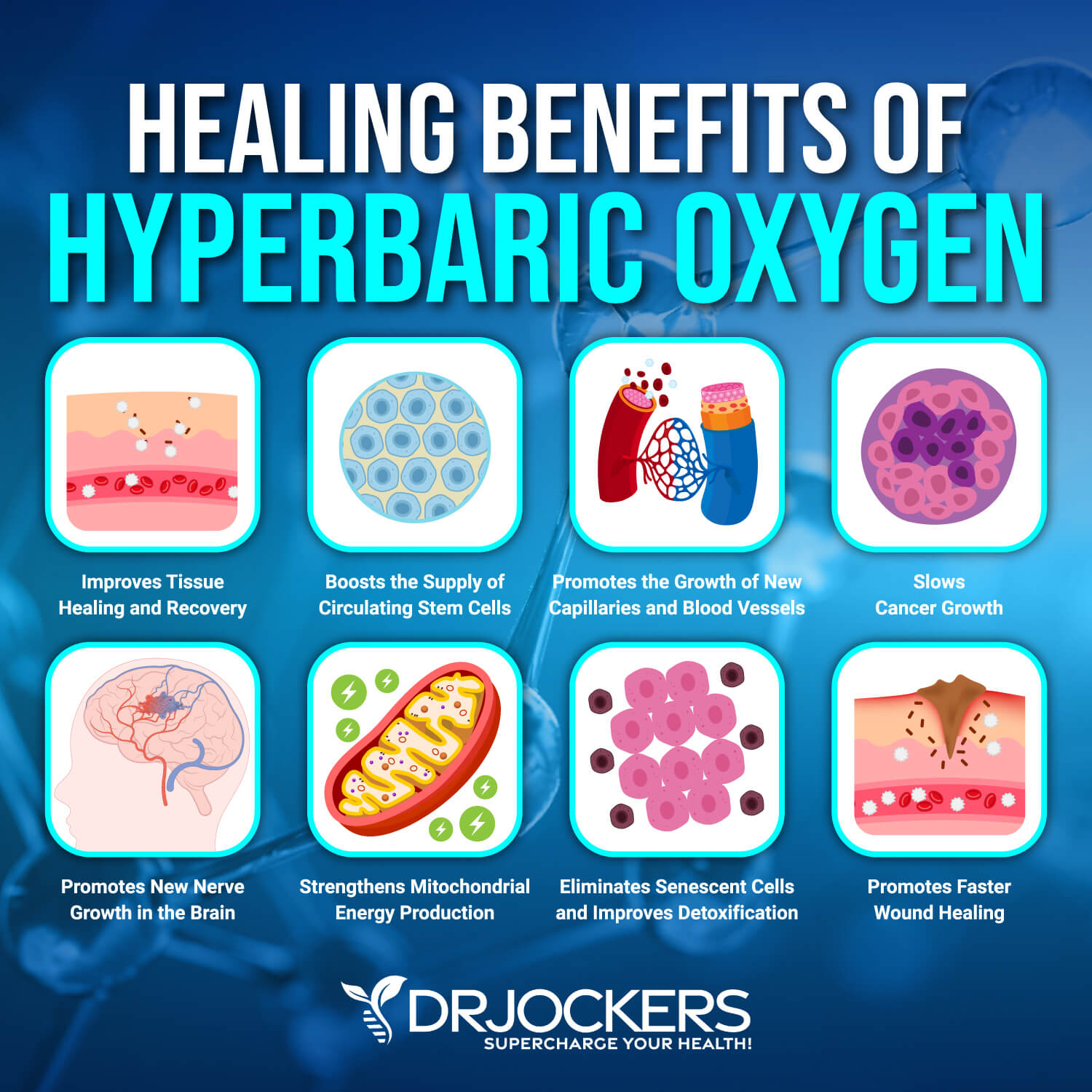
Conclusion:
ALS is a fatal neurodegenerative disorder characterized by the selective loss of both upper and lower motor neurons in the motor cortex, brainstem, and spinal cord. The death of motor neurons results in progressive muscle atrophy. In most cases, the death of the patient is due to respiratory failure and occurs within three to five years of diagnosis.
There is no cure for ALS. However, there are natural support strategies that may be helpful for anyone with this disease. An anti-inflammatory, ketogenic diet and lifestyle may be one of the most effective natural strategies. Other strategies include supporting the mitochondria, balancing the microbiome, healing the gut, optimizing micronutrient levels, deep breathing exercises, emotional support, avoiding EMFs, and using targeted supplementation.
If you want to work with a functional health coach, I recommend this article with tips on how to find a great coach. On our website, we offer long-distance functional health coaching programs. For further support with your health goals, just reach out—our fantastic coaches are here to support your journey.
Inflammation Crushing Ebundle
The Inflammation Crushing Ebundle is designed to help you improve your brain, liver, immune system and discover the healing strategies, foods and recipes to burn fat, reduce inflammation and Thrive in Life!
As a doctor of natural medicine, I have spent the past 20 years studying the best healing strategies and worked with hundreds of coaching clients, helping them overcome chronic health conditions and optimize their overall health.
In our Inflammation Crushing Ebundle, I have put together my very best strategies to reduce inflammation and optimize your healing potential. Take a look at what you will get inside these valuable guides below!




What an excellent article! So much valuable information all put together so that it is easy to understand. It is amazing how much can be done to help with the disease. It is a shame medical doctors say there is nothing to be done, because there obviously are many things that can help and many people have come so close to being functional again by doing the things listed in this article. Thank you so much!
Thanks so much and yes there is a lot one can do! Blessings to you and your family!
Find a natural alternative method to reverse different diseases and STDs no matter what science says about their illness. I am sharing my healing encounter from genital herpes after using Dr Okosun herbs, a herbal doctor from Africa, to cure my HSV-1&2 diagnosis permanently. A few weeks ago my new lab result still shows that I tested negative after being cured since 2018. I am so happy I gave it a try. Currently, my 65 years old mom is using Dr okosun herbs to eliminate her diabetes and the recovery process is amazing. I am recommending this product for those that are willing to give it a try as these holistic remedies do not have any side effects. drokosun55@gmail .com